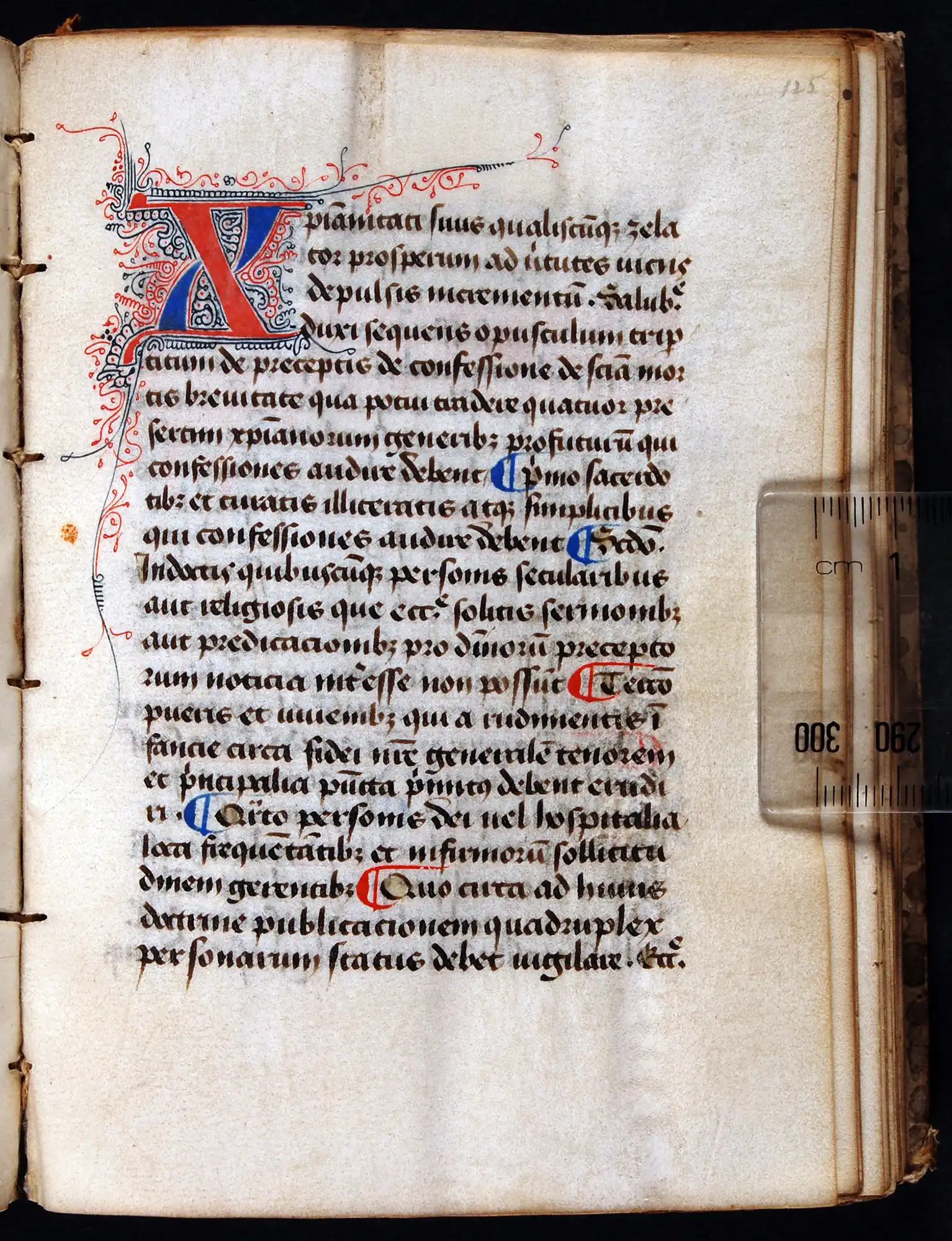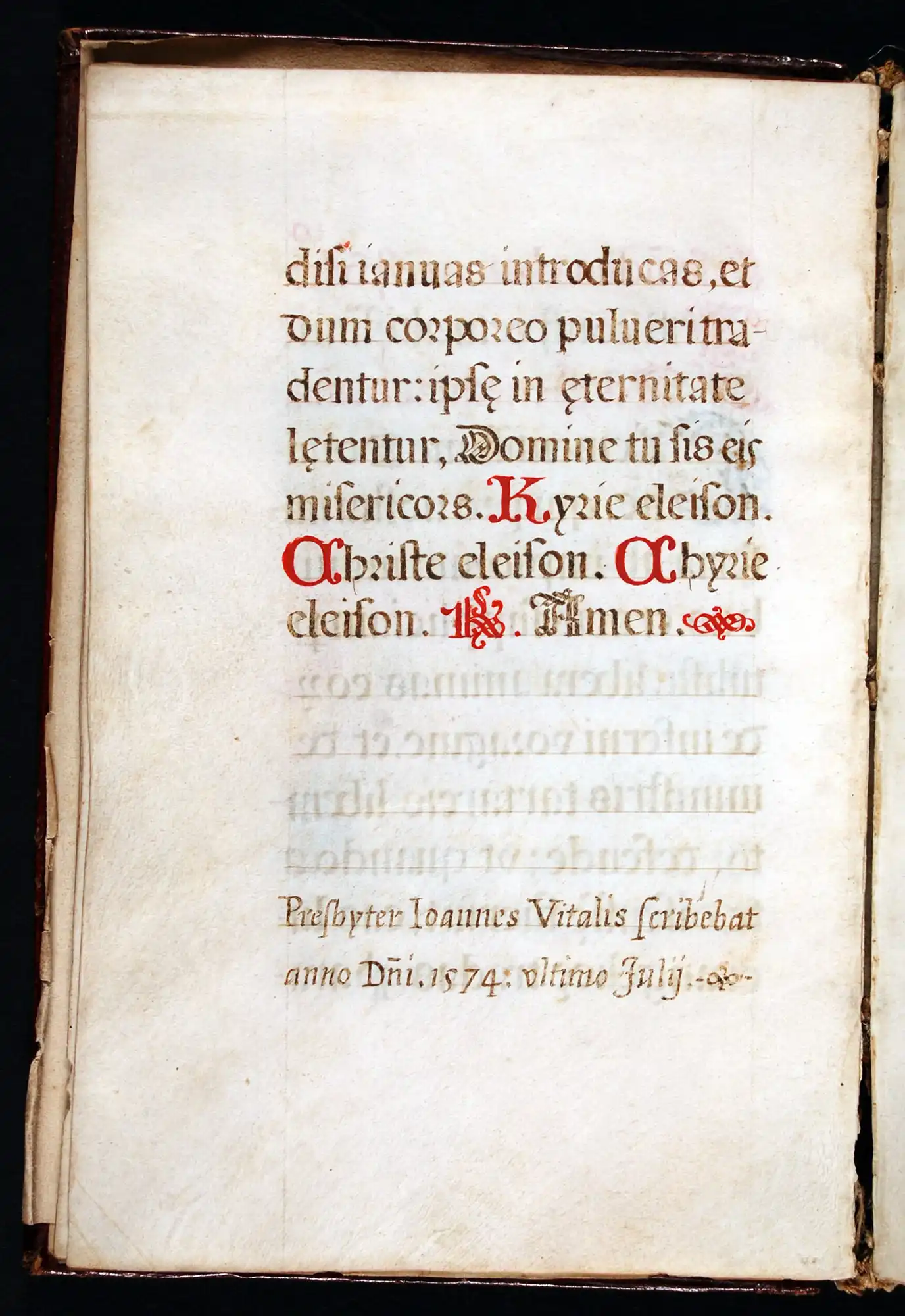Case 3
- Medieval Manuscripts 2

Gospels, in Middle English. England, ca. 1440. Reed MS6.
The Wycliffe Bible was the first major translation of the whole Bible into English from the Latin Vulgate. It is named after the principal figure behind the translation, English theologian John Wycliffe (d. 1384). Eight years after his death, Wycliffe’s disciple John Purvey (ca 1354-1414) completed a revision of the text in a more natural and idiomatic English compared to the literal word-for-word translation of his teacher. Both versions were considered heretical in the Middle Ages. Despite the efforts of the established Church to destroy all copies, approximately 230 manuscripts of portions of the Wycliffite scriptures have survived.
The text of the Reed copy is that of the Purvey version. Wycliffite Bibles are difficult to localise, but many seem to have been made in the Midlands. It was acquired on Reed’s behalf at a Sotheby’s auction in 1956. In his Autobiography (p. 263-4) Reed recalls his relief when he was informed by City Librarian Archie Dunningham that the Library’s bid had succeeded by the narrowest of margins. “We were very desirous of obtaining this manuscript, which would add a rare distinction to the collection.”

Collection of theological treatises, in Latin. Northern France, fifteenth century. Reed MS7.
On display here is the very first medieval manuscript purchased by A.H. Reed. Known as Reed MS7, it contains 146 leaves of vellum comprising six texts by various authors on spiritual meditation and on the virtues and vices.
It was purchased in December 1919 from the London dealer R.A. Atkinson for four pounds and ten shillings. In 1919, Reed had just returned to Dunedin from Featherston Camp where he had spent the latter part of the War. For a short time, he worked as a self-employed calligrapher, creating signs and illuminated addresses. He purchased this manuscript as an investment but also to use as a practical example of the calligrapher’s art.

Manual, in Latin. Northeast Italy (probably Venice), 31 July 1574. Reed MS9.
In this Renaissance-era manuscript, the scribe (named as Johannes Vitalis) uses the older, unfashionable Gothic script, rather than the contemporary Humanistic style. This is perhaps to evoke a sense of history and authority. His colophon (or signature) statement, however, is written in a contemporary script. The large capital in gold on a square red ground is distinctly Renaissance in style.
The text comprises the end of the Antiphons for the Funeral Service; the colophon of Johannes Vitalis; and the opening of the Litany of the Blessed Virgin Mary.
A.H. Reed purchased this manuscript for the Library from the bookseller Horace G. Commin of Bournemouth in 1956.


